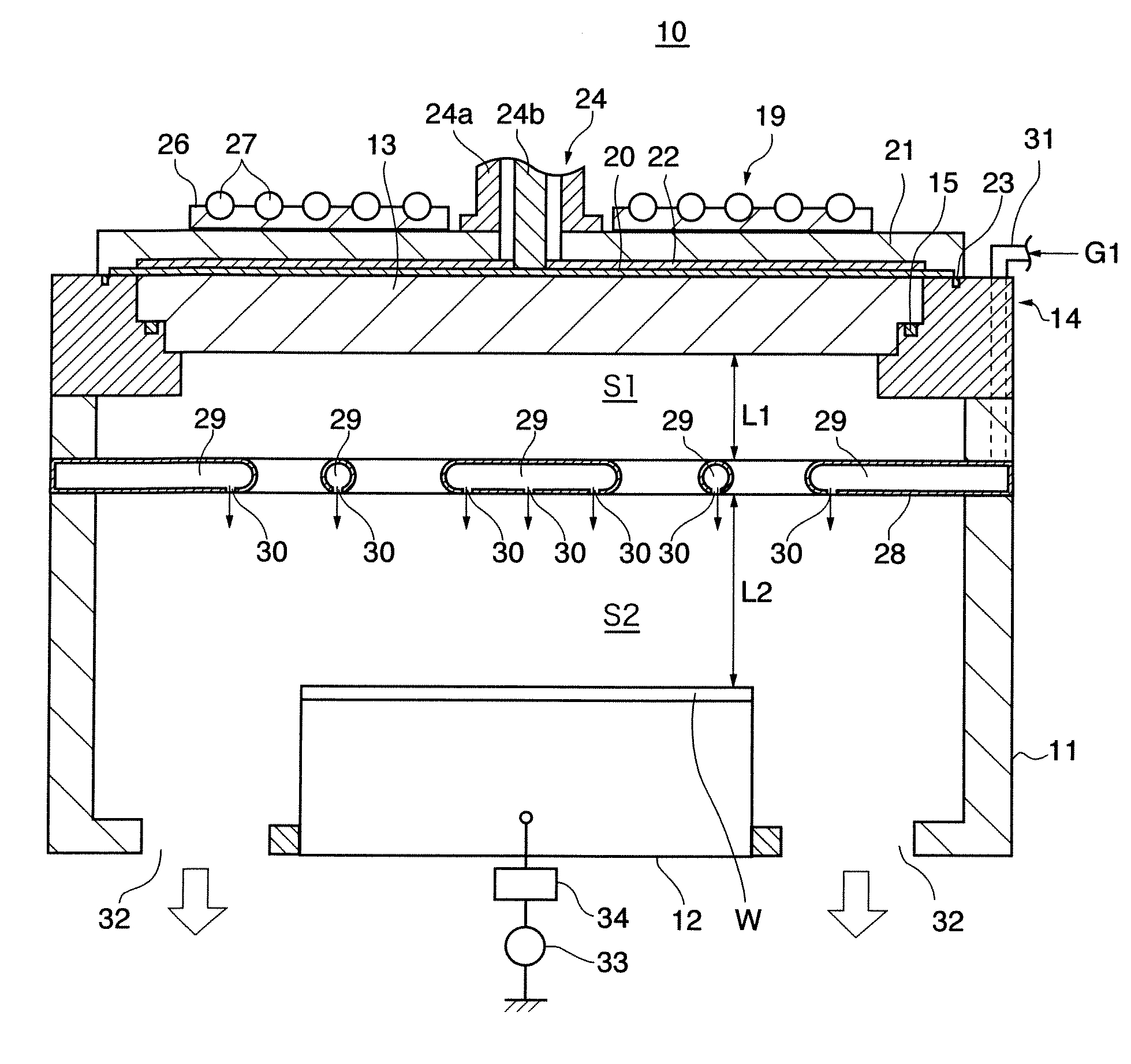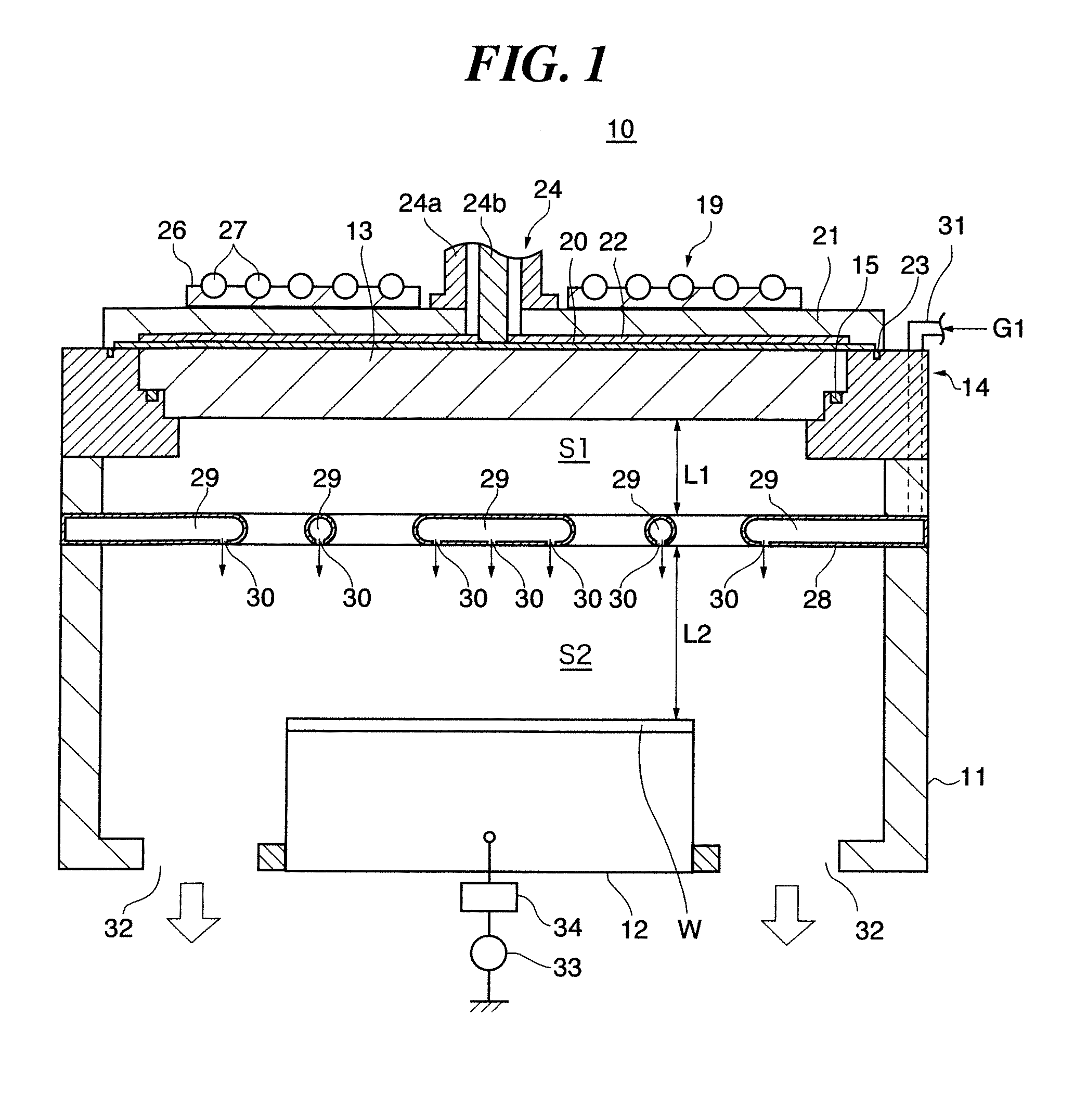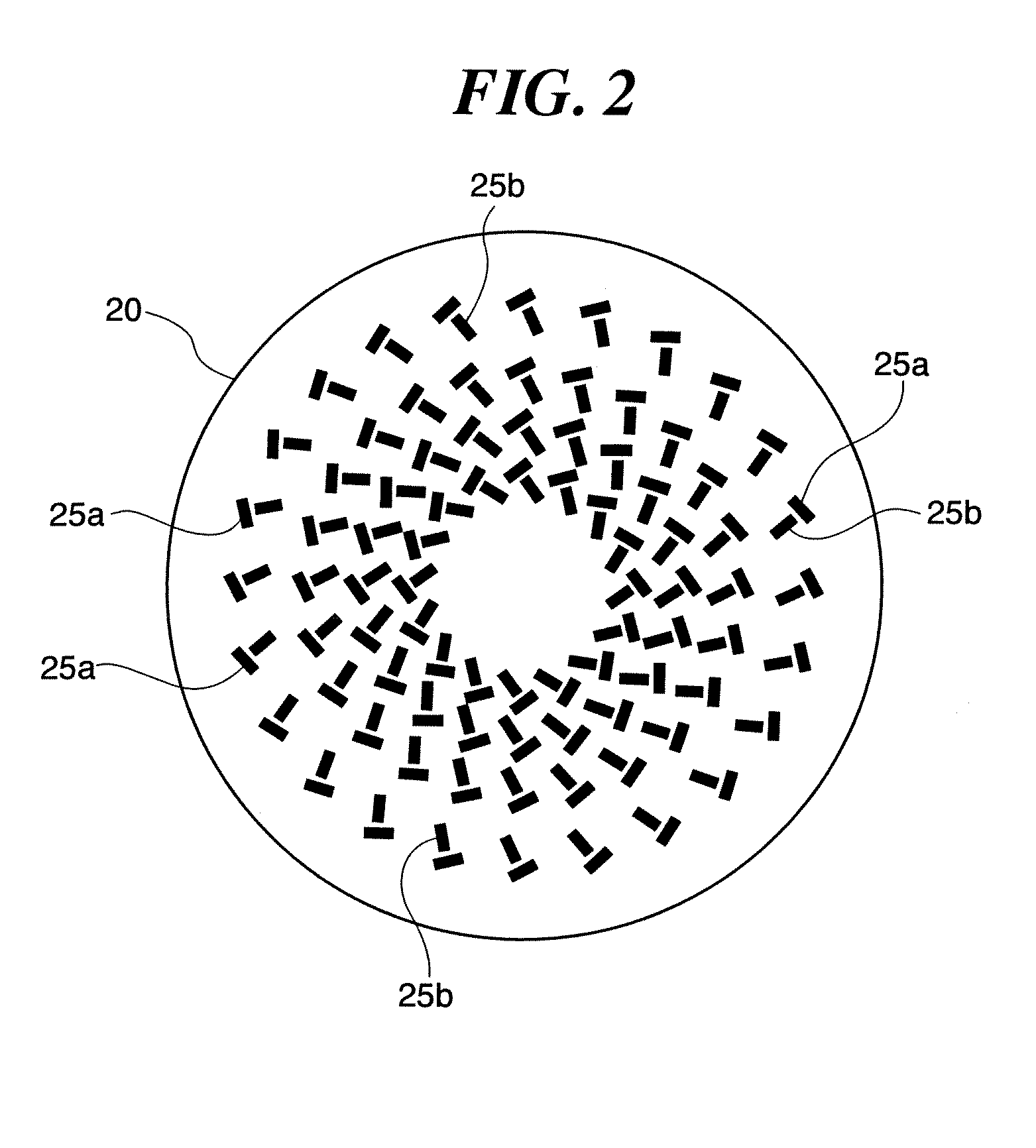Etching method and semiconductor device fabrication method
a fabrication method and semiconductor technology, applied in the direction of electrical equipment, basic electric elements, electric discharge tubes, etc., can solve the problems of difficult or impossible for a semiconductor device to have a desired performance, and achieve the effect of increasing the selectivity of a polysilicon film and preventing the formation of recesses
- Summary
- Abstract
- Description
- Claims
- Application Information
AI Technical Summary
Benefits of technology
Problems solved by technology
Method used
Image
Examples
example i
[0080]A wafer W shown in FIG. 4 was prepared and transferred into the processing vessel 11 of the substrate processing apparatus 10. HBr gas, O2 gas, and Ar gas were supplied as the processing gas G1 into the processing space S2. The pressure in the processing spaces S1, S2 was set at 4.0 Pa, a microwave of 2.45 GHz was supplied to the radial line slot antenna 19, and high frequency power of 400 KHz was supplied to the susceptor 12, whereby the part of the polysilicon film 37 exposed through the opening 40 was etched to an extent that such film part slightly remained on the gate oxide film 36. Then HBr gas and He gas were supplied to the processing space S2, and the pressure in the processing spaces S1, S2 was set at 66.7 Pa. Using plasma generated from the HBr gas and the like, the residue polysilicon film was etched. It was confirmed that the residue polysilicon film was completely removed but the gate oxide film 36 was hardly etched.
[0081]Then the wafer W was transferred into a p...
example 2
[0087]Under the same conditions as in Example 1, the part of the polysilicon film 37 exposed through the opening 40 was etched so as to slightly remain on the gate oxide film 36. Then, the residue polysilicon film was etched under the same conditions as in Example 1 except that the pressure in the processing spaces S1, S2 was set at 33.3 Pa.
[0088]Then, the gate oxide film 36 exposed due to complete removal of the residue polysilicon film was removed, and then the anti-reflection film 38 and the resist film 39 were removed. Based on subsequent observations on the gate formed on the wafer W, it was confirmed that, although there were a few recesses on the silicon base layer 35, the depths of the recesses were less than a critical depth below which there is no affection to ion implantation to the silicon base layer 35 (refer to FIG. 7(A)). It was also confirmed that the gate oxide film 36 in the gate was not formed into a shape widened toward its end.
example 3
[0089]Under the same conditions as in Example 1, the part of the polysilicon film 37 exposed through the opening 40 was etched so as to slightly remain on the gate oxide film 36. Then, the residue polysilicon film was etched under the same conditions as in Example 1 except that the pressure in the processing spaces S1, S2 was set at 93.3 Pa (700 mTorr).
[0090]Then, the gate oxide film 36 exposed due to complete removal of the residue polysilicon film was removed. In succession, the anti-reflection film 38 and the resist film 39 were removed, and subsequently the gate formed on the wafer W was observed. As a result, it was confirmed that there were no recesses on the silicon base layer 35 and that the gate oxide film 36 in the gate was formed into a shape widened toward an end thereof, but the magnitude of being widened is less than a critical magnitude below which there is no affection to ion implantation to the silicon base layer 35 (FIG. 7B).
[0091]It should be noted that in Example...
PUM
 Login to View More
Login to View More Abstract
Description
Claims
Application Information
 Login to View More
Login to View More - R&D
- Intellectual Property
- Life Sciences
- Materials
- Tech Scout
- Unparalleled Data Quality
- Higher Quality Content
- 60% Fewer Hallucinations
Browse by: Latest US Patents, China's latest patents, Technical Efficacy Thesaurus, Application Domain, Technology Topic, Popular Technical Reports.
© 2025 PatSnap. All rights reserved.Legal|Privacy policy|Modern Slavery Act Transparency Statement|Sitemap|About US| Contact US: help@patsnap.com



